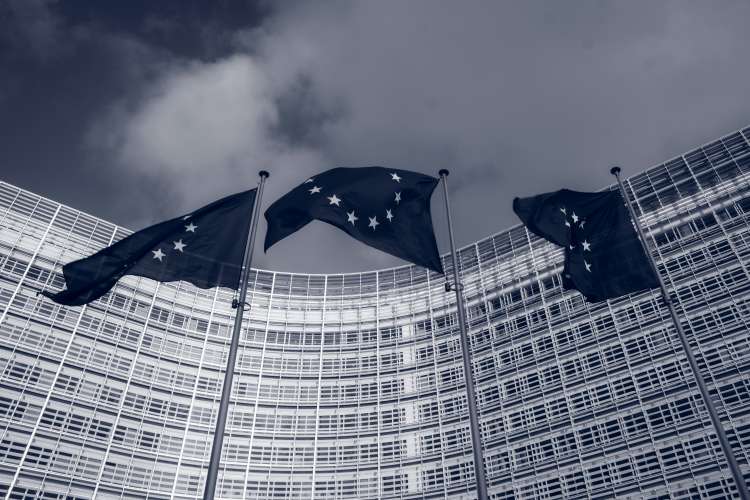
The European Union’s Carbon Border Adjustment Mechanism (CBAM) continues to pose a significant challenge for Indian exporters, despite assurances from the EU that India could circumvent the complex tax system by establishing a local carbon tax. According to a report by GTRI, even with a domestic carbon tax, Indian exporters would still incur a substantial portion of the CBAM charges.
The CBAM seeks to ensure that goods produced outside the EU face a carbon cost similar to those made within the bloc. The primary objective is to prevent carbon leakage, which occurs when an EU manufacturer relocates carbon-intensive production to countries with less stringent climate policies. This leads to EU-manufactured products being replaced with more carbon-intensive imports. The CBAM is set for full implementation by 2026, with importers beginning to pay the financial levy from that year.
READ | GST to get a makeover as govt looks to limit damage
CBAM and EU’s climate goals
This policy is integral to the EU’s broader climate goals of reducing emissions by 55% compared with 1990 levels by 2030 and achieving carbon neutrality by 2050. The gradual implementation of the CBAM coincides with the phase-out of free allowances under the EU Emissions Trading System (ETS), aiming to accelerate the decarbonisation of both domestic and imported goods within the EU.
The CBAM will initially target carbon-intensive sectors like cement, iron and steel, aluminium, fertilisers, electricity, and hydrogen, which are at high risk of carbon leakage. As the mechanism matures, its scope will expand to cover more than half of the emissions within sectors covered by the ETS. This policy is set to significantly impact global trade, particularly for countries like India.
India’s CBAM dilemma
While the EU suggests that India can mitigate the impact of CBAM by implementing a domestic carbon tax, the reality is far more complex. Even with a domestic carbon tax, Indian exporters would likely still face a significant portion of the CBAM charge due to the considerably higher carbon price in the EU compared to what India is likely to impose because of economic and developmental disparities.
Following the EU’s announcement of CBAM, the Indian industry expressed concerns about the new rules for tax exports to the 27-nation bloc. India Inc’s immediate worries centred on a CBAM clause requiring exporters to submit nearly 1,000 data points about their production methods. While Brussels contends that this requirement is meant to ascertain carbon footprint-related information, Indian exporters fear losing critical competitive advantage. Industry leaders claim that the data-sharing requirements for CBAM compliance are time-consuming and pose a significant risk of exposing sensitive trade secrets.
In 2022, more than 25% of India’s exports of iron, steel, and aluminium were to the EU. According to industry estimates, the EU tariffs could raise the costs of Indian exports by 20 to 35%. While large corporations like Tata Steel and JSW are prepared with ambitious decarbonisation targets, smaller companies will struggle. Reducing emissions in the steel industry is a herculean task, and technologies like carbon capture and storage, while promising, are often prohibitively expensive for smaller companies. These businesses will require substantial support from governments, regulators, and financial institutions to implement these solutions.
Indian industries now face multiple hurdles. Increased production costs due to the carbon tax will reduce competitiveness, potentially leading to job losses and plant closures. Moreover, higher input costs could translate into inflated consumer prices, affecting the overall economy. The policy may even distort global trade patterns as businesses seek to avoid the carbon tax.
To tackle CBAM, the government is exploring options such as implementing a domestic carbon pricing system, retaliatory measures, and diplomatic negotiations. However, these strategies could lead to potential economic impacts such as increased costs, job losses, and inflationary pressures. Policymakers and the government must carefully balance environmental sustainability with industrial competitiveness.
Analysts also believe that the government must contest CBAM’s protectionist underpinnings. While it has already questioned the mechanism at the WTO, India must join forces with other affected countries to contest CBAM at climate fora.
The EU’s CBAM is being implemented against a backdrop of unfulfilled climate finance commitments to developing countries. This inequity has led to proposals for redirecting CBAM revenues to support these nations in their green transitions. However, given the complexities of climate finance, securing agreement on this would be challenging.
A UNCTAD report identified Russia, China, and Turkey as the countries most vulnerable to the EU’s Carbon Border Adjustment Mechanism. Among developing nations, India, Brazil, and South Africa are expected to be significantly impacted due to their substantial export volumes to the EU, particularly in sectors like steel and aluminium. Mozambique, as a least developed country, is projected to face the most severe consequences. It is important to note that the EU collectively represents about 14% of India’s total exports.
Developing nations are also worried about other developed countries following the EU’s lead. Although the United States opposes CBAM, discussions have started in America about imposing a similar levy. If other countries adopt similar regulations, it will eventually translate to a significant impact on India’s trading relationships and balance of payments.
